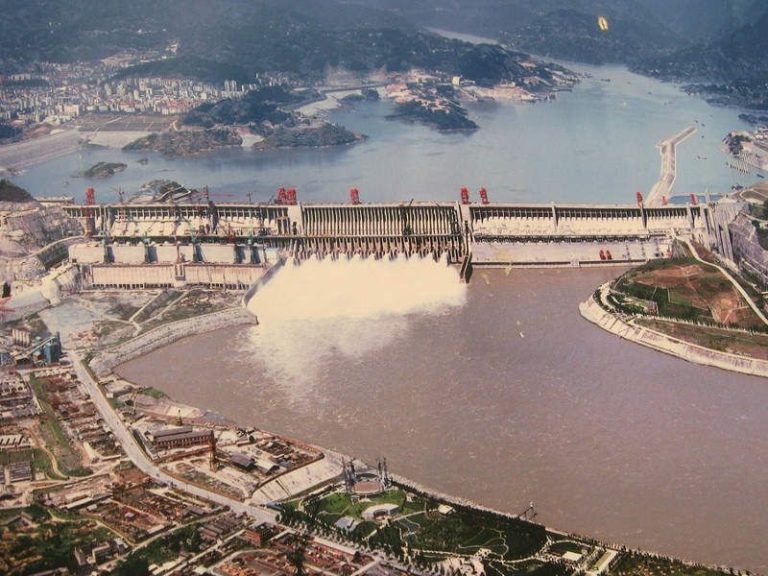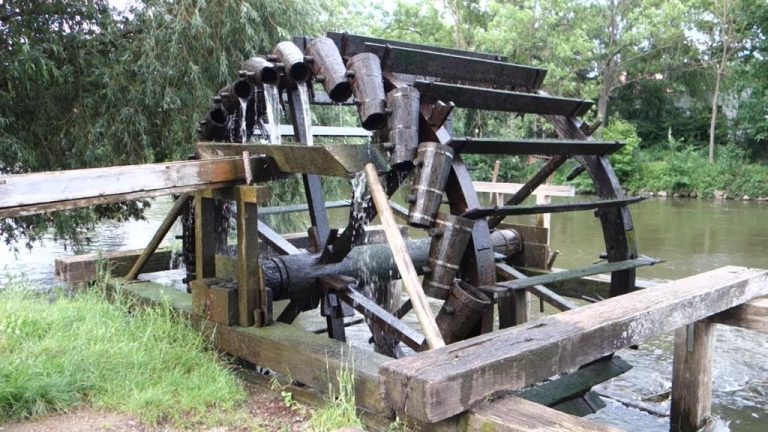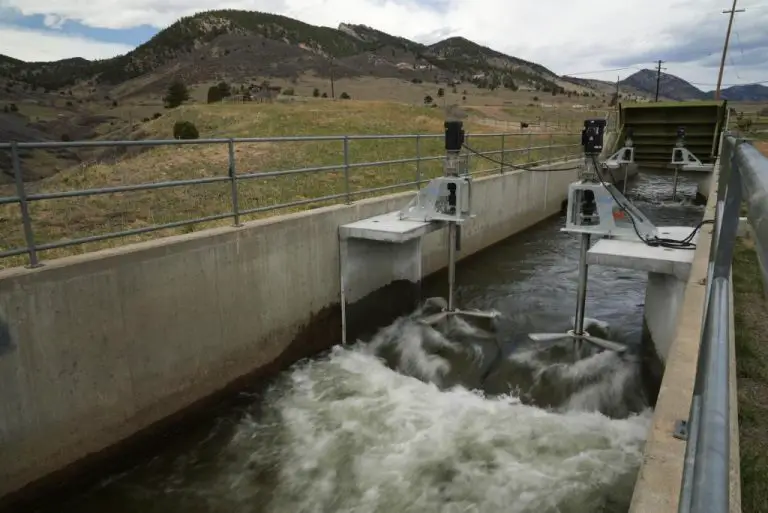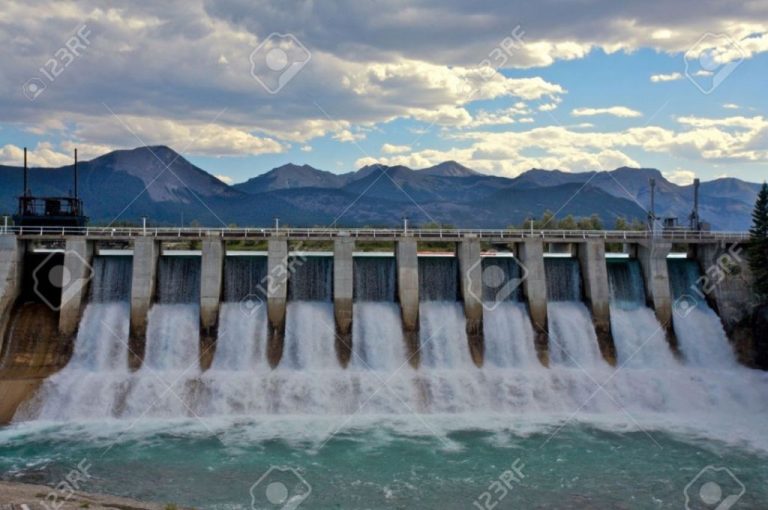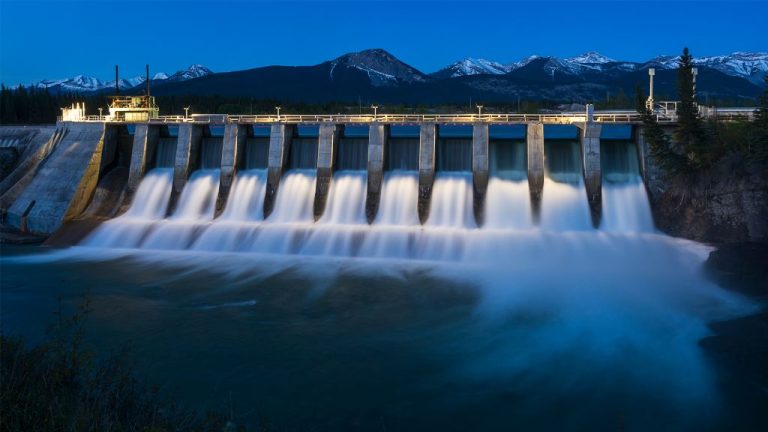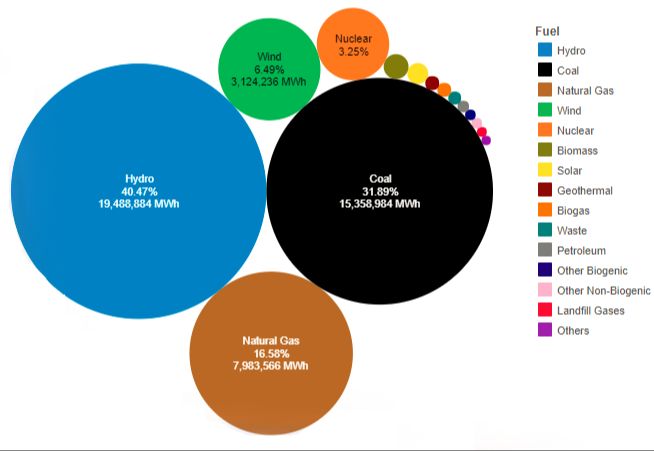What Are The Top 3 Largest Hydroelectric Power Plants In The United States Where Are They Located?
Hydroelectric power is an important source of renewable energy in the United States. This article will overview the three largest hydroelectric power plants in the country, which are all impressive feats of modern engineering. We’ll explore where these plants are located, how much power they generate, their history, and why they are so vital to local and national electricity production.
Grand Coulee Dam
The Grand Coulee Dam is located on the Columbia River in Grant County, Washington (USBR Factsheet). At 550 feet tall and 5,223 feet long, it is the largest concrete structure in the United States and one of the largest in the world. The dam has a total generating capacity of 6,809 megawatts, making it the largest hydroelectric power plant in the country (Wikipedia).
Construction on Grand Coulee Dam began in 1933 as part of the Columbia Basin Project during the Great Depression. It was built in four stages between 1933 and 1979. The original purpose was for irrigation and flood control, but its focus shifted to power production during World War II when aluminum factories were built in the region. Over 10 million cubic yards of concrete were used to construct the dam. The reservoir it created is called Lake Roosevelt, which stretches 150 miles upstream (PBS).
The Grand Coulee Dam produces an average of over 20 billion kilowatt hours of electricity each year, enough to supply 2-3 million homes. It provides crucial renewable power to the Pacific Northwest region (USBR Factsheet). The dam has become an iconic symbol of American engineering and hydroelectric capabilities.
Chief Joseph Dam
The Chief Joseph Dam is located on the Columbia River along the border of Douglas County, Washington and Chelan County, Washington. It is located about 38 miles north of Wenatchee, Washington.
Chief Joseph Dam was authorized for construction by the Flood Control Acts of 1950 and 1958. Construction began in November 1955, and the dam began operations in 1961. The dam has a maximum height of 245 feet, and a length of 1,474 feet. With 27 main generators in the powerhouse, it has the hydraulic capacity of 6,030 m3/s (213,000 cu ft/s) [1].
About 2.2 million cubic yards of reinforced concrete was used to construct Chief Joseph Dam [1]. The dam creates Rufus Woods Lake, which has a full pool elevation of 746 feet and a surface area of 41,500 acres.
Robert Moses Niagara Power Plant
The Robert Moses Niagara Hydro-Electric Power Station is located on the Niagara River in Lewiston and Porter, New York (Wikipedia 2021). With a capacity of 2,525 MW, it is the third largest hydroelectric power plant in the United States (Niagara Falls Info). Construction on Robert Moses began in 1953 to harness the immense hydro power potential of Niagara Falls. The power station officially opened in 1961 and consists of 13 generators. Robert Moses delivers reliable renewable electricity to millions of New Yorkers and is an iconic example of large-scale hydroelectric power.
Hoover Dam
Hoover Dam is located in the Black Canyon of the Colorado River, on the border between the U.S. states of Nevada and Arizona. At 726 feet high, it was the world’s tallest dam at the time of its completion in 1935 [1]. The dam impounds Lake Mead, the largest reservoir in the United States in terms of water capacity, capable of holding over 9 trillion US gallons of water.
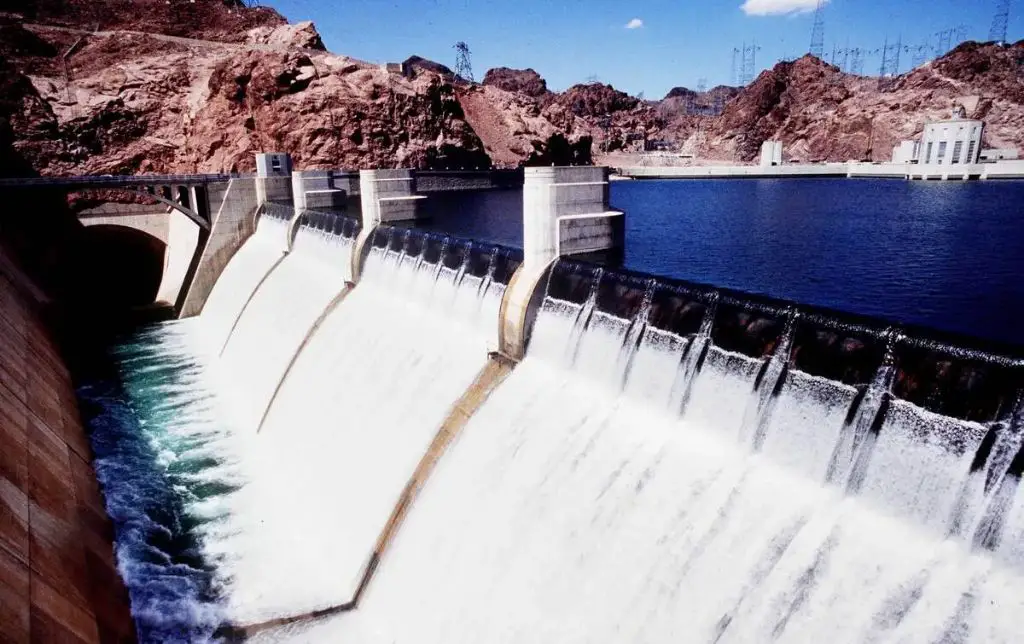
Construction on Hoover Dam began in 1931 and was completed in 1936, two years ahead of schedule. Over 21,000 workers helped construct the massive concrete arch-gravity dam, which required enough concrete to build a two-lane highway from Seattle to Miami [2]. The project provided much needed jobs during the Great Depression. Its construction was the result of a decades-long fight over water rights in the region.
The power plant at Hoover Dam has an electricity generation capacity of about 2,080 megawatts. The dam supplies drinking water, provides flood control, and generates renewable hydroelectric power in the lower Colorado River region [3]. Hoover Dam remains an engineering marvel and stands as a symbol of America’s infrastructure ambitions.
Comparison
The Grand Coulee Dam is the largest hydroelectric power plant in the United States with a capacity of 6,809 MW, followed by the Chief Joseph Dam with a capacity of 2,620 MW. The Robert Moses Niagara Power Plant comes in third with a capacity of 2,675 MW [1].
In terms of average annual generation, Grand Coulee produces the most at 21 billion kWh annually. Chief Joseph produces over 10 billion kWh, while Robert Moses Niagara generates around 7 billion kWh per year [2].
The Grand Coulee Dam is located on the Columbia River in central Washington state. Chief Joseph Dam sits upstream on the same Columbia River in north-central Washington. The Robert Moses Niagara Power Plant is located along the Niagara River in Lewiston, New York [3].
While massive in scale compared to most hydro plants, these three facilities are dwarfed by mammoth dams across the globe like China’s Three Gorges Dam which has over triple the capacity of Grand Coulee.
Importance
Hydroelectric power plays a major role in renewable energy generation in the United States. As of 2019, hydroelectricity was the second largest renewable energy source in the country after wind power, accounting for over 7% of total U.S. utility-scale electricity generation and 46% of total utility-scale renewable electricity generation (EIA). With the ability to store large amounts of potential energy by pumping water uphill into reservoirs, hydroelectric dams provide load balancing services and improve grid reliability. During periods of peak electricity demand, stored water can be released to quickly ramp up electricity generation. The responsive capacity of hydroelectric facilities allows them to fill gaps when other sources like solar and wind are not generating electricity. According to the U.S. Department of Energy, hydropower’s “unique ability to provide energy storage and rapidly adjust output helps mitigate reliability issues associated with variable renewable resources” (DOE).
Environmental Impact
Hydroelectric power has both positive and negative effects on the environment. On the positive side, hydroelectricity has a minimal carbon footprint and does not directly emit air pollutants or greenhouse gases. Unlike fossil fuel power plants, hydroelectric generators do not burn fuel, which helps reduce air pollution and its impacts on ecosystems and human health (https://www.eia.gov/energyexplained/hydropower/hydropower-and-the-environment.php).
However, hydroelectric dams and reservoirs can severely disrupt river ecosystems and natural habitats. Building dams floods large areas of land, destroying forests, wildlife habitats and agricultural areas. Damming rivers also alters natural water temperatures and flow patterns, impacting fish migration and spawning. Slow-moving reservoir water accumulates silt and nutrients, causing algae blooms and growth of non-native aquatic weeds. Reservoirs also produce greenhouse gases like methane from organic matter decay at the bottom (https://www.ucsusa.org/resources/environmental-impacts-hydroelectric-power).
Future Outlook
With supportive policies and investments, hydropower has significant potential for growth in the United States. There is currently over 50 GW of development planned through 2030 (Other_sources_url). New technologies such as advanced turbines, pumped storage, and hydrokinetic power can help maximize energy production and grid reliability.
Several major projects are in development, including an 840 MW pumped storage facility in California and upgrading existing dams in the Pacific Northwest. Upgrades to existing facilities could add up to 12 GW of capacity nationwide (Other_sources_url).
The Hydropower Vision report by the Department of Energy sets a goal to double U.S. hydropower capacity to nearly 150 GW by 2050. Realizing this will require substantial investments, partnerships, supportive policies, and technological innovation. However, the long-term benefits for renewable energy production, grid resilience, and U.S. economic growth make this a worthwhile endeavor.
Conclusion
In summary, the largest hydroelectric power plants in the United States are the Grand Coulee Dam in Washington, the Chief Joseph Dam on the Columbia River bordering Washington and Oregon, and the Robert Moses Niagara Power Plant in New York. These massive dams harness the power of mighty rivers to generate clean, renewable electricity for millions of homes and businesses across the country.
The Grand Coulee Dam is the largest, with over 6,800 megawatts of capacity. The Chief Joseph Dam ranks second with over 2,500 megawatts. And the Robert Moses Niagara plant comes in third with 2,525 megawatts of capacity. Their locations on the Columbia River and Niagara Falls demonstrate how America’s defining natural landscapes also provide vital resources.
Hydroelectric power plays a crucial role in the nation’s energy portfolio. It offers emissions-free, sustainable electricity. However, large dams also greatly impact local ecosystems and communities. There remains debate around dams’ costs and benefits. Still, hydropower seems poised to continue as a major renewable electricity source as the U.S. transitions to a greener grid.

